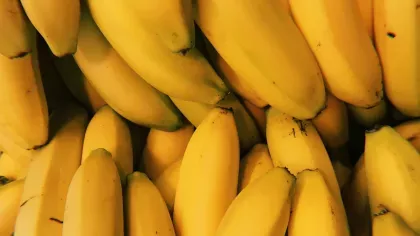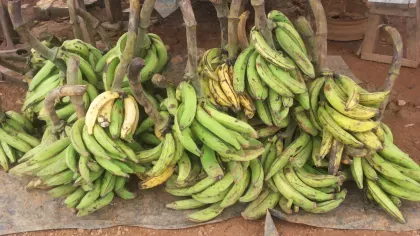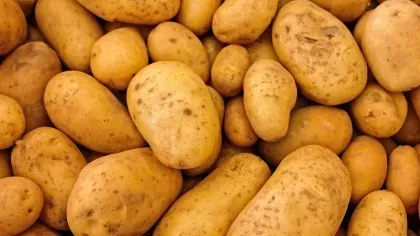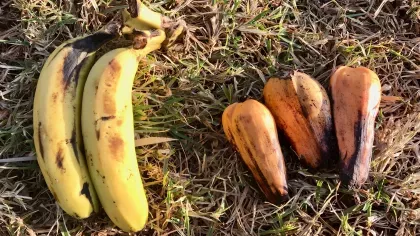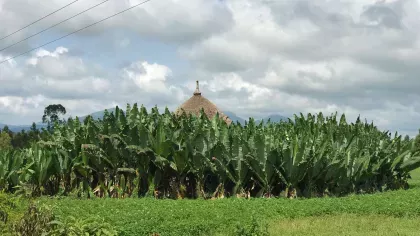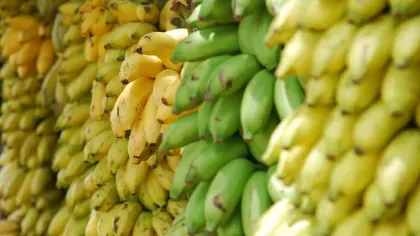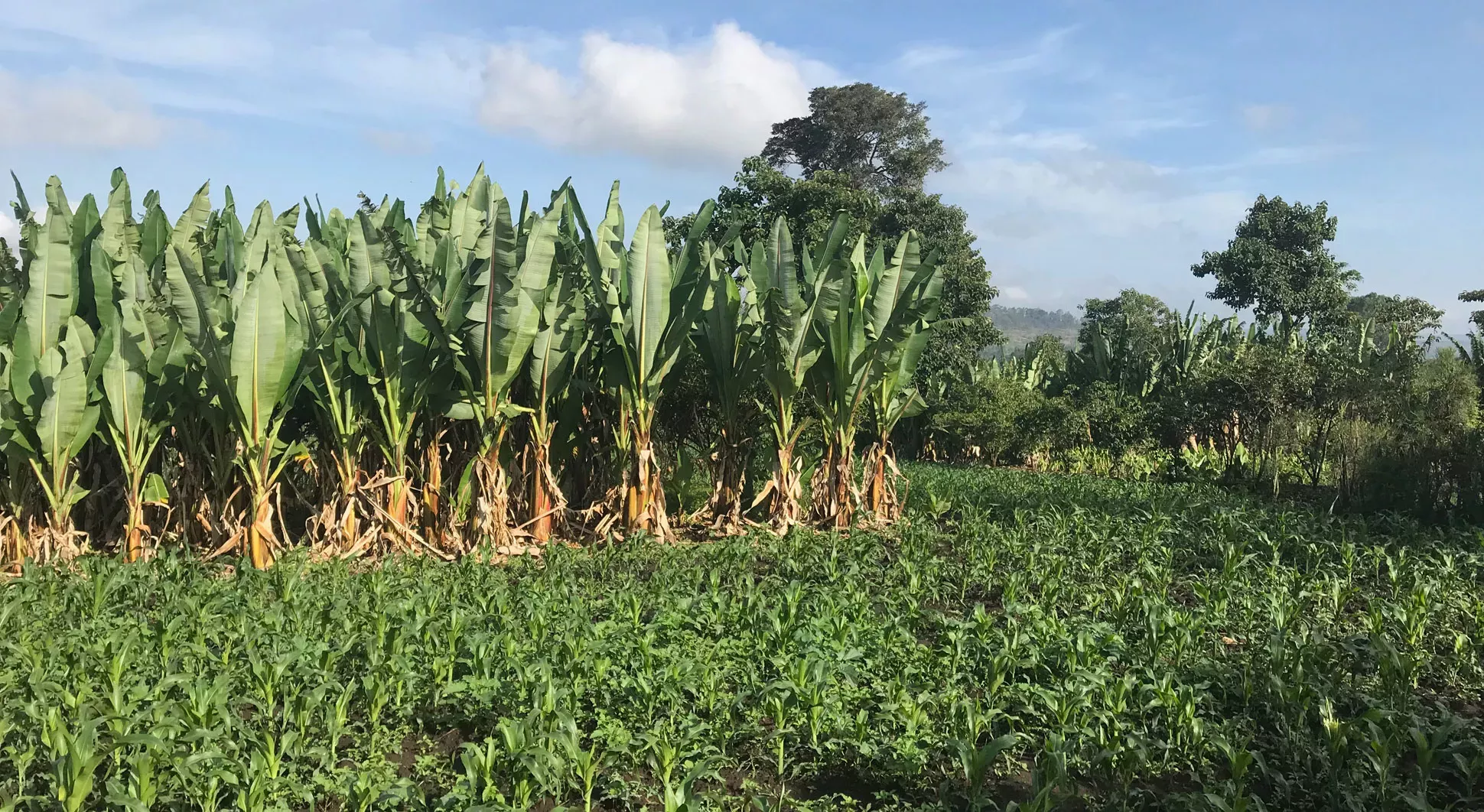
Enset
On this page
Known as the ‘tree against hunger’, enset feeds 20 million people across Ethiopia — over a sixth of the population.
The so-called 'false banana' not only provides food, but is a source of material for weaving, as well as a companion crop (plants which support a main crop by providing protection from pests and improving soil health) for coffee and sorghum.
Enset is also incredibly resilient; it is able to tolerate droughts far better than other staple crops.
Given its potential, it is no wonder that enset is being explored as a crop to help battle rising food insecurity across Africa.
It is estimated that just 60 enset plants could feed a family of five for a whole year.
Plant description
Like banana and plantain, enset is not actually a tree, but a giant herb. The ‘trunk’ is in fact a pseudostem, formed of leaf shafts wrapped tightly around each other. The green leaves grow up to 5m long, with a pink central midrib. The whole plant can grow up to 10m tall.
The flowers are produced in 2 to 3m-long flower clusters at the top of pseudostems. The 4 to 8.5 cm-long, white or cream-coloured flowers can be male or female. Female flowers are found at the base of the flower cluster, and males near the top. Purple modified leaves, known as bracts, wrap around large groups of flowers to support them.
The yellow or orange-coloured fruits resemble smaller, rounded bananas, and contain a pulpy, edible flesh containing hard black seeds.
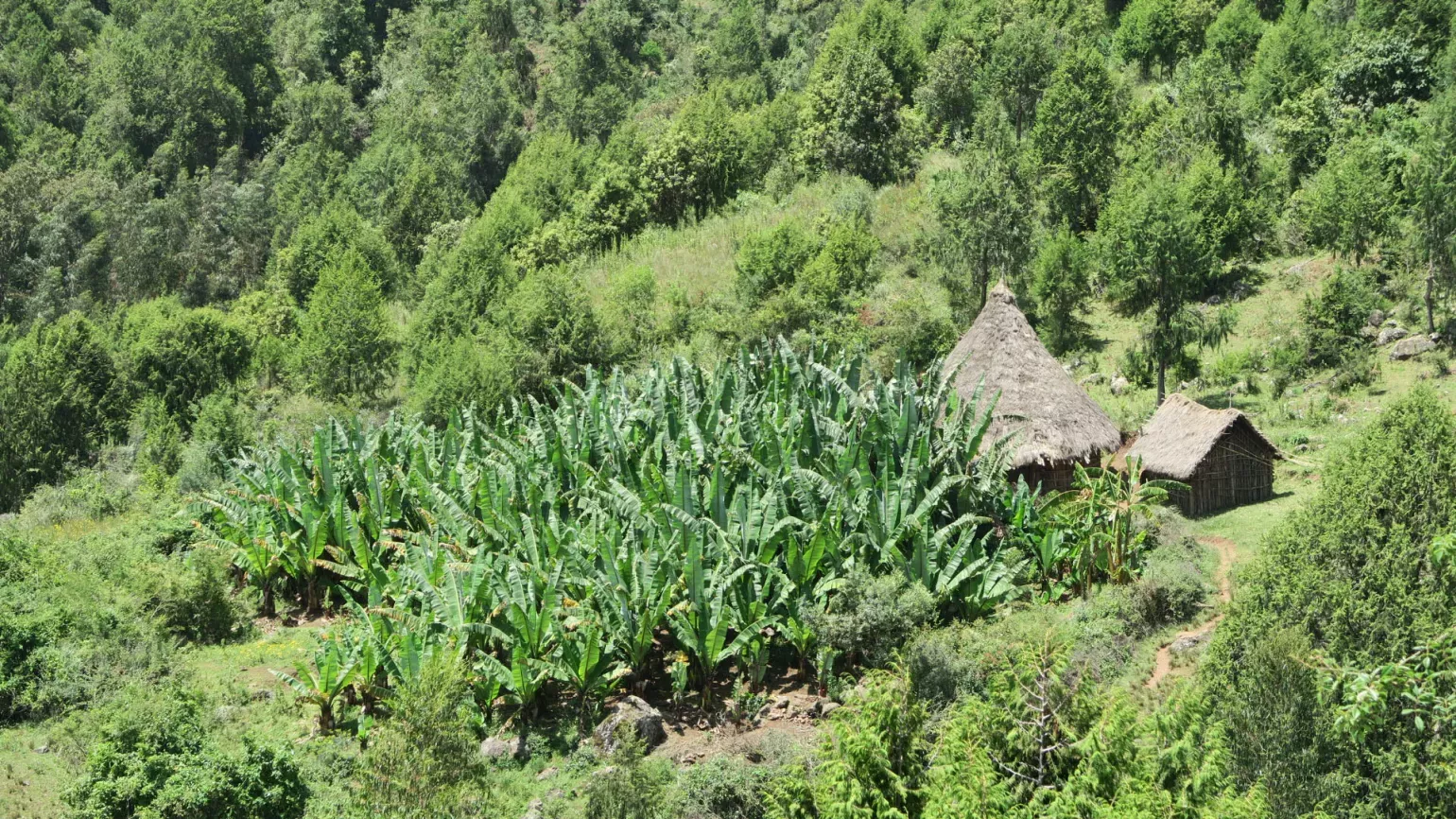

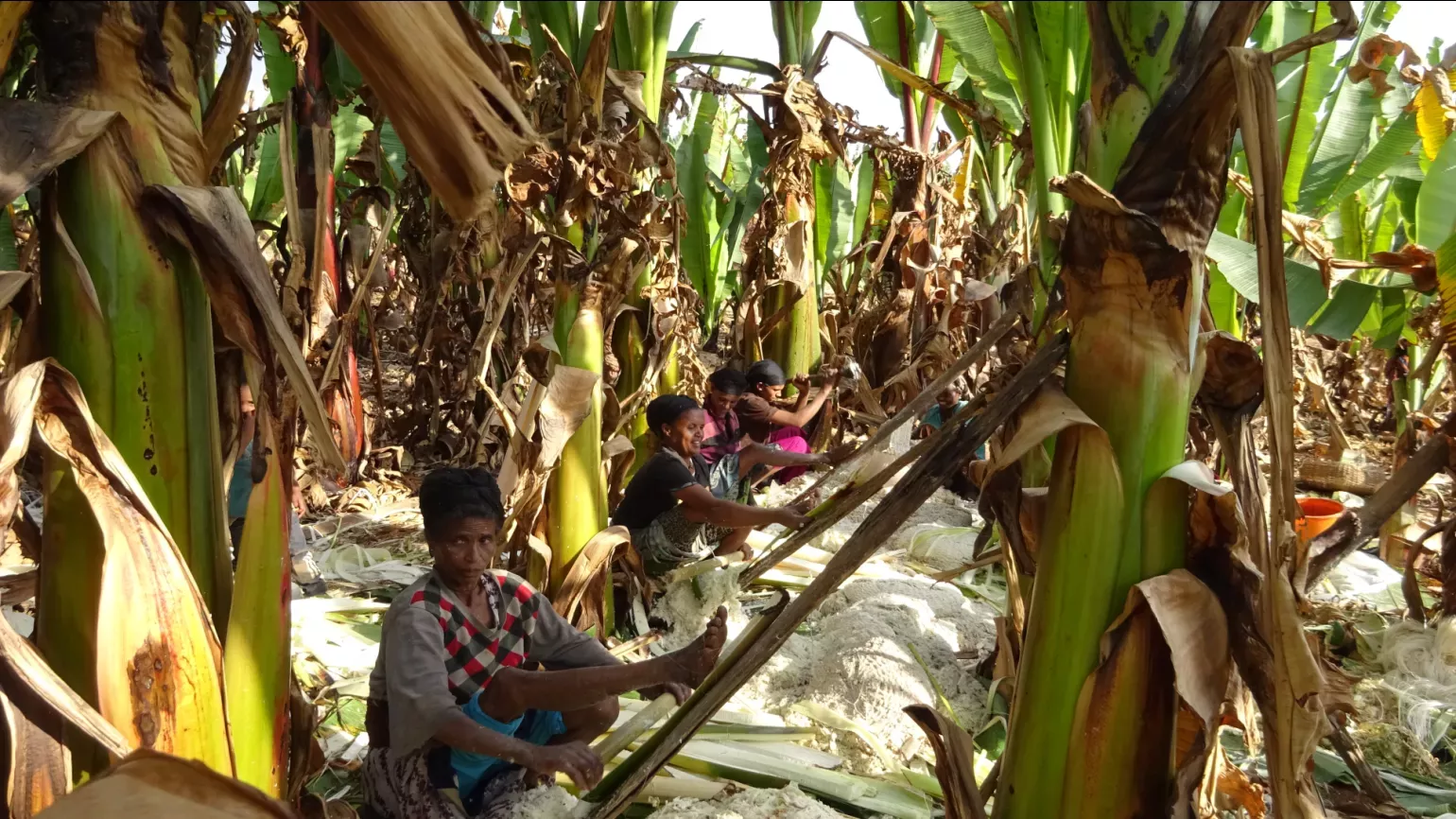
Plant uses
Food and drink
The softer plant material in the centre of the pseudostem is cooked and eaten all across Ethiopa.
The stem and roots of enset are mashed up and buried underground for up to two years to make a bread-like food called kocho.
A side product of making kocho is bulla, a white powder that can be used to make dumplings and pancakes.
The root of the enset tree, called amicho, is also edible. It can be boiled and eaten like a potato.
Materials and fuels
Fibre used for weaving can be made from enset leaves.
Almost all the plant, beside the roots, is used as animal feed.
Did you know?
One of the alternate names for enset, the Abysinnian banana, comes from an old name for the Ethiopian Empire, Abysinnia.
Cultivated enset is clonally propagated, meaning instead of planting seeds to get new plants, the top of an old plant is removed, and the shoots that emerge are planted into the fields.
There are hundreds of varieties of enset, including green stripe, cherallo, and yobo.
The species name ventricosum means 'swollen on the side', referring to the swollen pseudostem of the enset plant.
Where in the world?

Swamp margins, river banks and open, moist mountain forests, but now cultivated across Ethiopia.
Find it in our gardens
Kew Gardens
A botanic garden in southwest London with the world’s most diverse living plant collection.
Location
View map of Kew GardensBest time to see
Our work
With a high yield and resilience to long periods of drought, enset could be a climate-smart crop for the future.
Little is currently known about enset’s biology, especially the genetic variation across varieties, its fruits and seeds, and its ability to withstand pests and diseases.
Kew scientists are working on a project that aims to fill critical knowledge gaps to help enset become a food of the future.
Could enset provide reliable access to nutritious food for more people, particularly under climate change?
A recent paper from researchers at Kew found that enset has the potential to be grown over a much larger area than it currently is. Not only within Ethiopia, but elsewhere in Africa, such as Kenya and Uganda.
Another key finding was the importance of conserving wild enset. The species occurs in steep river valleys across Eastern and Southern Africa. It was found that wild enset tolerates slightly different conditions — genetic diversity that could be useful in the future for plant breeding.
